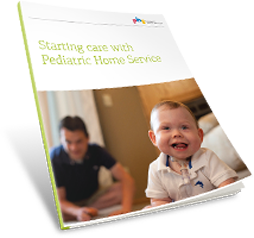Guest Post: Getting Out and About with Medical Equipment
Food Pumps
While I was on enteral feeding through my g-tube, I used a small, portable feeding pump that fit in a backpack. I was able to put my feeding bag and pump in the backpack, and go out and about for the day. My pump held a charge for several hours, and I was able to plug the pump back in when I got back to my dorm room to charge in between classes or activities. If I was going to be gone for a long period of time, I could bring the battery charger and plug my feeding pump in while I was out of my room while still carrying my feeds in my backpack. This was really essential for me, as I had to run my tube feeds at a slow rate because of my GI condition, and I was on tube feeds for a minimum of 18 hours each day. If I could not take the feeding pump with me, I would have been tethered to a pump and pole, likely in bed, and been unable to attend classes and activities. It is still possible to do tube feeds and attend activities at the same time — trust me, I’ve done it!
Long-Term IV Therapies
Likewise, with TPN, hydration, or other long-term IV therapy, there are many small, portable, battery-operated pumps on the market that fit in backpacks or small waist packs. I am frequently on IV antibiotics for my lung condition, and my antibiotics are often scheduled every six or eight hours. That makes it very difficult to get anything else done if I have to stop and plug in to a bulky pump at home every six hours! Many of the medications come in elastomeric, individual self-infusing “balloons” that are self-contained, and fit in my pocket. Those that require a pump use a small pump that fits in a backpack. For TPN, often one is on two or three liter bags of hydration each day with added nutrients. This is infused throughout the day. With portable pumps and backpacks, it is possible to go to class, out with friends, attend social activities, and do almost anything that one wants to do! I’ve even travelled across the country on an airplane while infusing my TPN.
Oxygen Concentrators
Just like TPN and enteral feeding, there are now portable oxygen concentrators that make traveling with oxygen a breeze! I can fly with the portable oxygen concentrators, use the battery operation while in flight, and plug them in to keep them charged while in conference centers, hotels, airports, or anywhere with a power outlet. I have also used the portable oxygen concentrator while traveling by car, and can plug the concentrator in to charge in the car as well. Likewise, I have a portable nebulizer to get my breathing treatments that will fit in my backpack, rather than having to take along a large, bulky full size nebulizer. While it is still a lot of equipment, it is so much easier than it was a few years ago to travel with medical equipment!
Flying With Medical Equipment
Traveling with medical equipment is getting easier, and when flying, airport personnel is getting much more familiar with various medical equipment. To make travel go more smoothly, it is important to have letters from your physician listing the equipment and medications with which you will be traveling. Check with your airline ahead of time to be sure that you have all of the documentation that they require filled out in advance. Each airline differs slightly in my experience with the information that they require for traveling with medical equipment, and they each have their own forms that they like for you to use. While a letter from your doctor will generally suffice, I’ve found that things go best when you use the airline specific form each time you travel. Also, the airlines require you to have a new form filled out each year, even if it is for the same equipment, and for the same information. Be mindful of the information that you need, and give your doctor enough lead time to ensure that you have the proper documentation before you leave town!
The last piece of information that I want to add is that most airlines do not charge you for extra baggage that is dedicated for medical supplies. You may want to think about this as you pack, and pack your medical supplies in one bag, with some extras put into another bag, just in case of an emergency situation with your medical supply bag. Also, be sure to keep at least a day’s worth of medical supplies with you on your person in case of lost baggage.
I hope that I have given you some helpful advice about traveling with medical equipment.
————————————————————————————————————————————————————————————————————————
Thanks so much to Aliza for contributing her best practices and tips she’s discovered as she stays active and independent with her medical equipment. If you have a topic idea or would like to be a guest on the PHS blog, please e-mail Kelsey at kkhalena@pediatrichomeservice.com.
Originally published: May 17, 2013


